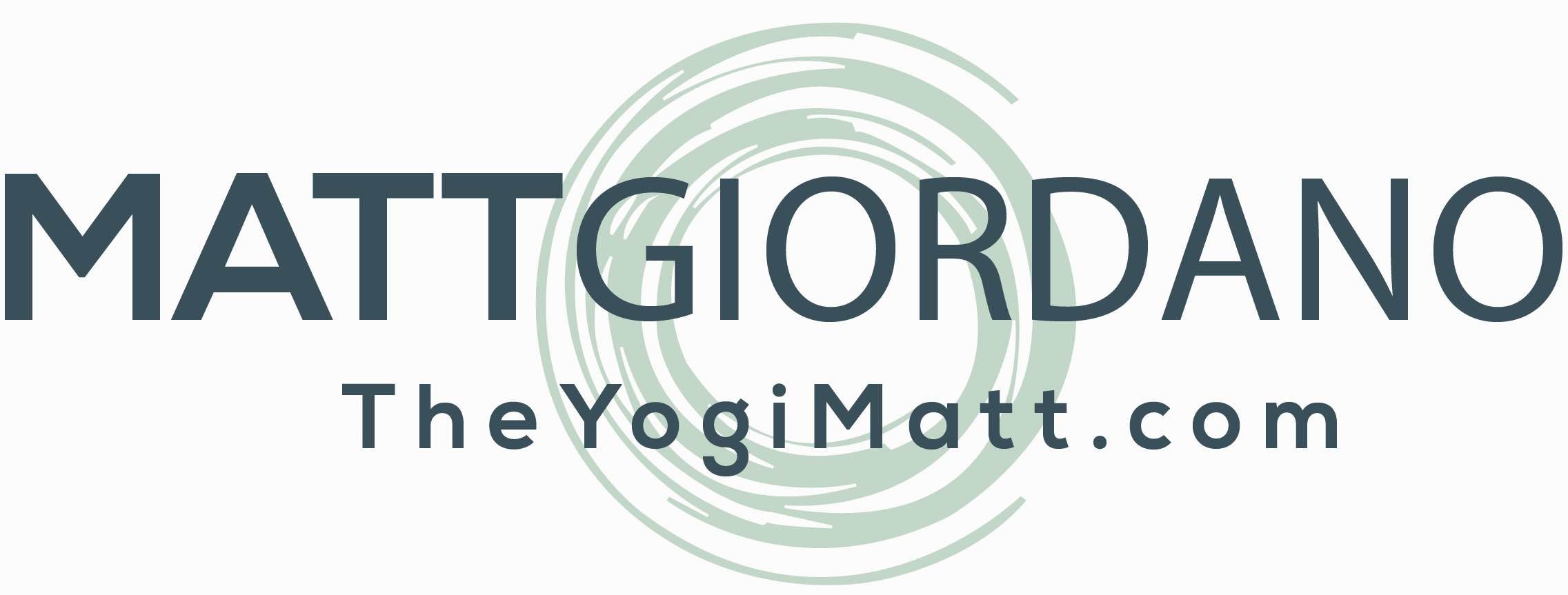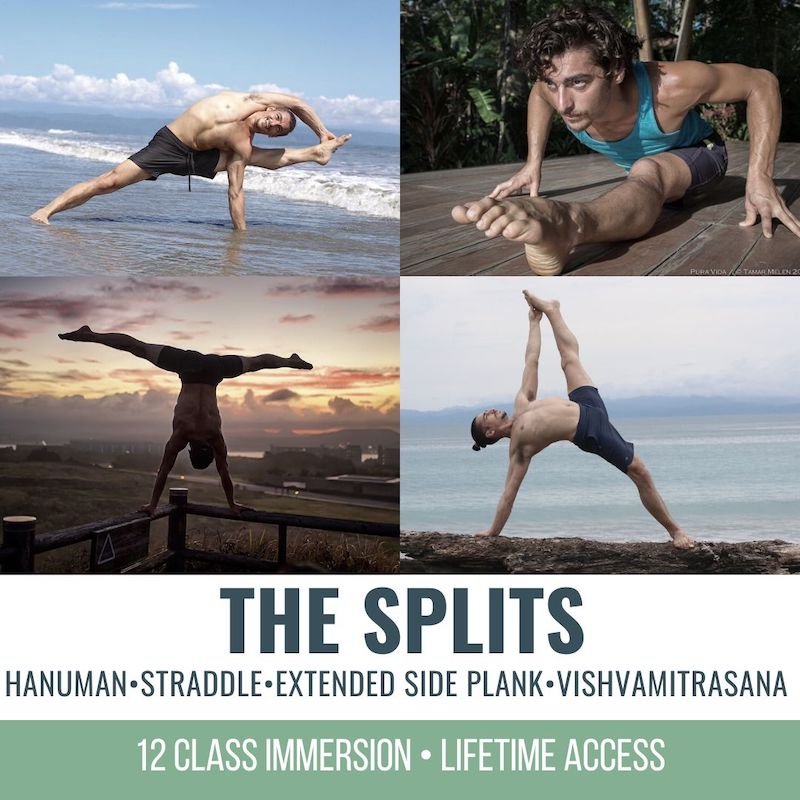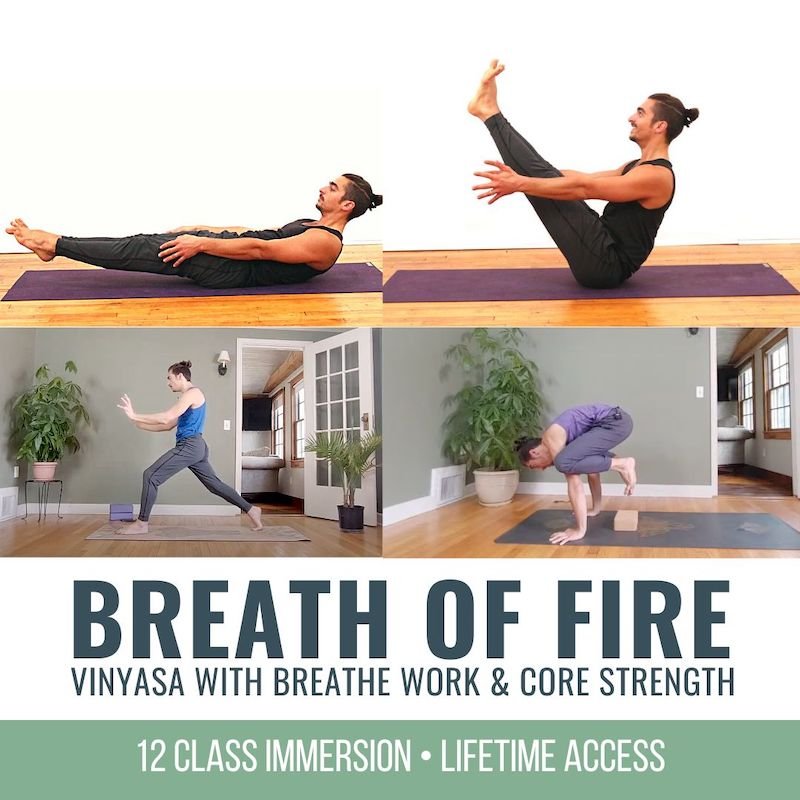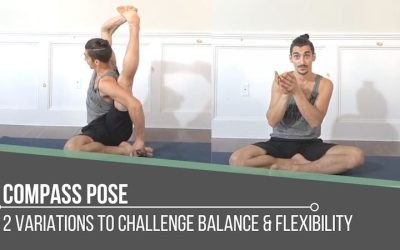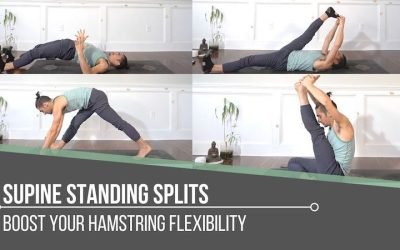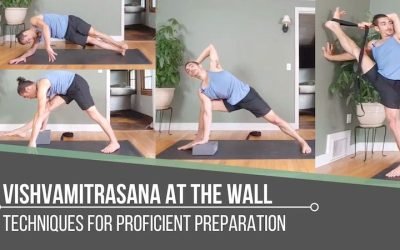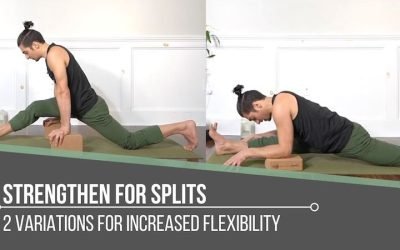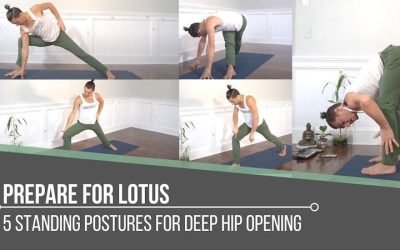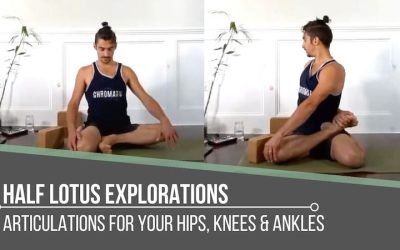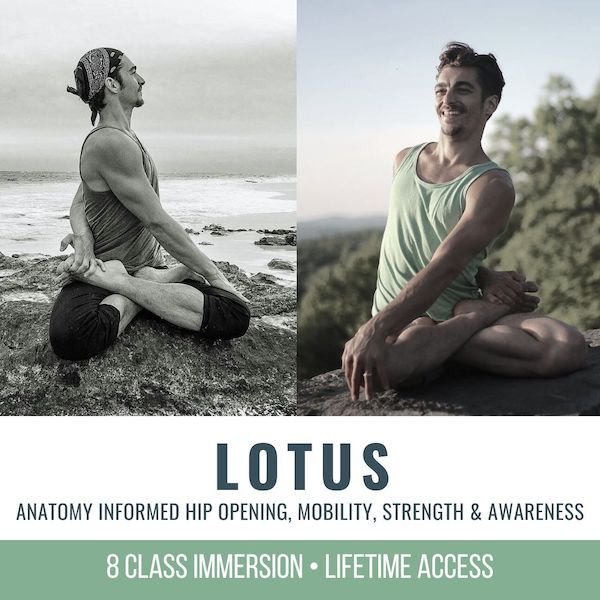Compass Pose Variations to Challenge Balance and Flexibilitybalance & flexibilityCOMPASS POSE VARIATIONS Compass Pose, especially the variations Matt offers today, will challenge you, and not necessarily in the ways you might think. Most obviously, it will...
Compass Pose
Compass Pose
Variations to Challenge Balance and Flexibility
balance & flexibility
COMPASS POSE VARIATIONS
Compass Pose, especially the variations Matt offers today, will challenge you, and not necessarily in the ways you might think. Most obviously, it will challenge you in the lateral flexion of the spine and the extensive amount of shoulder and hamstring flexibility required, but even more than that are all the lifts, drops, and turns, or maybe better said, the articulations and/or actions in the joints, that make it that much more challenging. However, with challenge comes reward. You’ll see that both variations provide an opportunity to deepen your understanding of the posture because of the step-by-step techniques you’ll follow and because of how your body responds within the posture. After reviewing today’s video clip, you’ll be empowered with 2 variations of Compass Pose that will test your ability to stay present while increasing strength, balance, and flexibility.
THE SPLITS
- Improve flexibility of hamstrings, adductors, hip flexors, and glutes
- Hanumanasana Splits
- Center Splits
- Vishvamitrasana
- Standing Splits / Ekapadasana
- Extended Side Plank / Vashisthasana
- Straddle entries for inversions, with modifications for all levels
- Moderate Vinyasa style with alignment, technique, and biomechanics
- Sequences are anatomically informed and carefully crafted
- 12 Classes: All levels appropriate
- Lifetime unlimited access to all
- Attend the livestream OR practice the replays any time that’s convenient for you
$148.00
ANATOMY OF COMPASS POSE
Although Compass Pose is a seated posture, it does require balance. After all, one leg is lifted while the other is grounded to the floor. Lifting the top leg requires strength in the outer hip muscles (gluteus medius & minimus). Because you grab hold of the foot of the top leg, you might argue that Compass Pose is both a passive and an active stretch. A healthy approach to this lifting and opening is to activate those outer hip muscles to create more abduction, rather than relying solely on the flexibility of the adductors and the hamstrings. Next up are your shoulders and back muscles. Gaining access to grabbing hold of the foot requires an engagement of the rhomboids to create more opening in the shoulders. In addition, there are 2 actions that are key to putting it all together.
WATCH THE VIDEO
COMPASS POSE: 2 VARIATIONS TO CHALLENGE BALANCE AND FLEXIBILITY
COMPASS POSE VARIATION 1
It’s the 2 additional actions we’ll see now that bring the pose together.
In this variation, the bottom knee is bent. Matt shows you how to “snuggle” into your lifted leg while leaning and putting your weight into the bent (or seated) leg, seting you up for success. Leaning your weight to the side allows for a hike of the hip—the first action. This lifting, along with the activation of the rhomboids to pull your shoulder back, allows you to more easily guide your foot. Matt explains that keeping the hike of the hip means that your pelvis is at an angle in which your leg doesn’t have to fight against the hip joint, ultimately making it easier for shoulder opening. The second action is the internal rotation of the hip as you lift the leg. Internal rotation helps maintain the lift.
200 HOUR ONLINE TEACHER TRAINING
GET CERTIFIED & DEEPEN YOUR YOGA PRACTICE
- Deepen your yoga practice
- Build confidence speaking in front of groups in person and online
- Learn foundational class structures and templates
- Learn techniques for a wide range of yoga postures
- Get certified and highly qualified to teach yoga
- Yoga Alliance Globally Recognized Certification Program
COMPASS POSE VARIATION 2
In this 2nd variation of Compass Pose, the bottom leg is straight and mimics Center Splits early in the setup. Once you’re in the posture, extending the bottom leg all the way out further challenges your balance and flexibility. In order to maintain better balance, you can emphasize internally rotating through both legs for more stability in your base.
Now, remember when I mentioned that Compass Pose can be viewed as both an active and a passive stretch? In the full class, Matt takes the pose to the next level and offers the option of letting go of the foot and relying on both the active flexion of the hip and the activation of the outer hips. Do these actions remind you of anything? If you said Vishvamitrasana, then you’re right. So much of what Matt offers here is exactly what you need to prepare for Vishvamitrasana (also known, among other names in English, as Flying Compass Pose).
300 HOUR ONLINE TEACHER TRAINING
GET 500 HOUR CERTIFIED AS A MASTER TEACHER
Master your skill set as a teacher through refined techniques, anatomy, biomechanics, sequencing, philosophy, meditation techniques, theming, yoga business, and much more!
- Get 500 hour certified
- Learn anatomy, biomechanics, asana techniques
- Expand your teaching skills
- Masterful sequencing and verbal delivery
- Learn meditation and breathwork techniques
- Transformative tools: theming, dharma talks, satsang
WITH CHALLENGE COMES REWARD
The challenges you encounter might be in those finer details (hiking up and internally rotating the hip), or perhaps the inability to balance on one side is preventing you from utilizing the flexibility available to you. If you do find balance, incorporating the internal rotation may either throw off your balance or make it hard to maintain. The truth is that building on one step at a time while honoring the current state of your body will help you reap the rewards over time.
Matt’s current Splits Immersion will both challenge you and guide you toward the mastery of these techniques.
See you on the mat!
The 200 Hr. Teacher Training: Click Here to See the Next Start Date
The 300 Hr. Advanced Teacher Training: Click Here to See the Next Start Date
Article by Trish Curling
Video Extracted From: The Splits
BREATH OF FIRE
- Moderate Vinyasa-style classes
- Core strengthening & integration
- Master your breath with pranayama practices
- Access your core in arm balances, heart openers, twists, forward folds, inversions, and more
- Learn where and how to breathe in challenging postures
- Each class will include one pranayama (breathwork practice) and several core strengtheners
- Access your core muscles: deep, superficial, anterior, posterior, and lateral
- 12 Classes: All levels appropriate
- Lifetime unlimited access to all
- Attend the livestream OR practice the replays any time that’s convenient for you
$148.00
Continue Learning
Compass Pose
Supine Standing Splits
Supine Standing Splits Boost Your Hamstring Flexibilitystrength & flexibilitySUPINE STANDING SPLITS Tight hamstrings are a common complaint, right? They may be showing up by way of limitations in various yoga postures and/or in restrictions in the way you move in...
Vishvamitrasana At The Wall
Vishvamitrasana at the Wall Techniques for Proficient Preparationsage visvamitraVISHVAMITRASANA AT THE WALL There are many stops along the way to a peak posture, but without being empowered by effective steps and techniques to implement, you are left with untapped...
Strengthen For Splits
Strengthen for Splits Variations for Increased FlexiblityhanumanasanaSTRENGTHEN FOR SPLITS If the Splits (Hanumanasana) had a personality, it might be one of the most vocal in the room. Aesthetically, it’s quite bold. The shape of the posture makes it evident that it...
Prepare For Lotus
Prepare for Lotus Standing Postures for Deep Hip OpeningflexibilityPREPARE FOR LOTUS There are multiple ways to prepare for Lotus Pose. The 5 standing postures and the techniques that are highlighted today are from a portion of a sequence Matt shares in the first...
Half Lotus Explorations
Half Lotus Explorations Articulations for Your Hips, Knees, and Ankleship mobilityHALF LOTUS POSE EXPLORATIONS Lotus Pose may become accessible at different phases of your practice, but it might not ever become attainable. Half Lotus Pose and variations are a great...
THE FREE TECHNIQUE PACK
When You Subscribe, You Will Get Instant Access to
- the Technique Pack: 15 yoga pose breakdowns
- exclusive online course discounts
- exclusive blogs and videos
